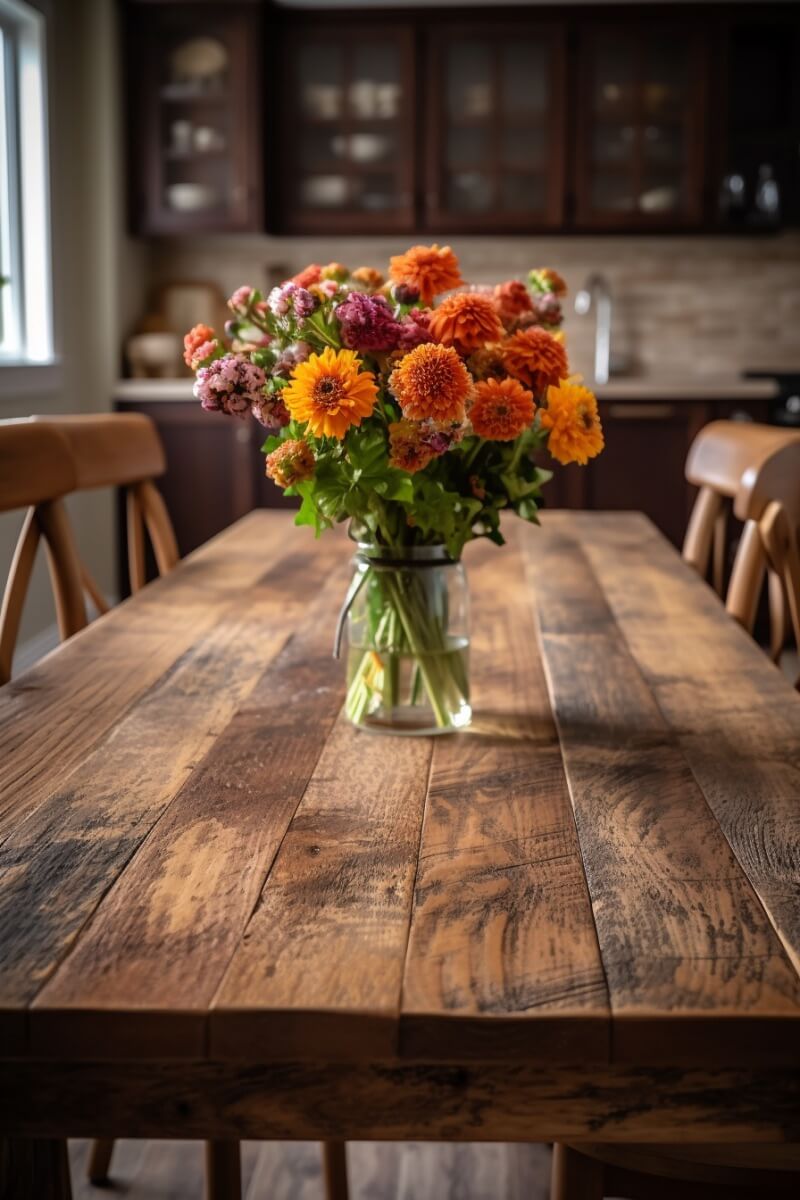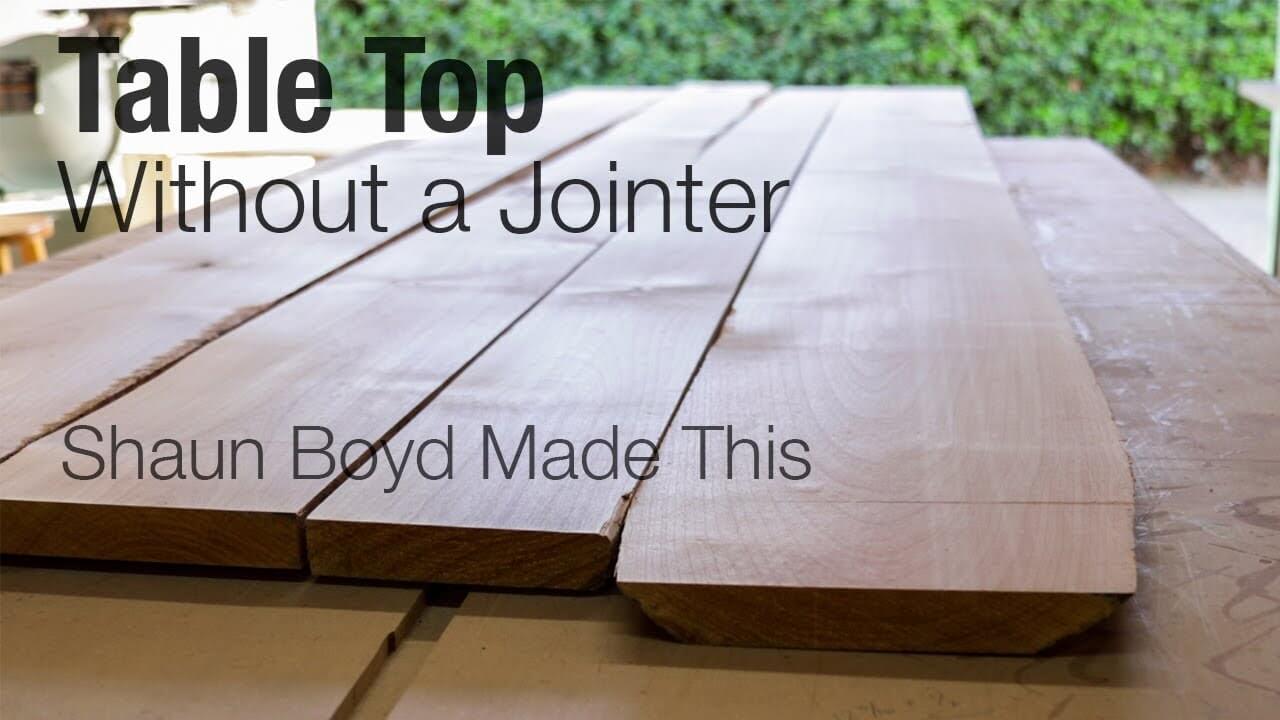Best Wood for Table Tops
In general, woods like white oak, walnut, cherry, brown maple, ash, elm, beech, sycamore mahogany and hickory are the best wood for table tops. Each of these have their specific features, pros and cons, which make them suitable for specific uses such as dining tables, coffee tables, farm tables, outdoor use, etc.
The dining table is the heart of your dining room, and the wood you select influences its aesthetic appeal, durability, and how it harmonizes with your existing décor.
Choosing the suitable wood for your table is crucial, as it determines the desired appearance and longevity, ensuring it withstands daily use for years to come. So what makes a good wood for table tops?
Best Wood for Dining Table Top
Selecting the perfect wood for your dining table top involves evaluating wood grain and hardness.
In this guide, we’ll explore top wood options, considering their unique properties and benefits to help you choose the ideal material for a stunning, long-lasting dining table.
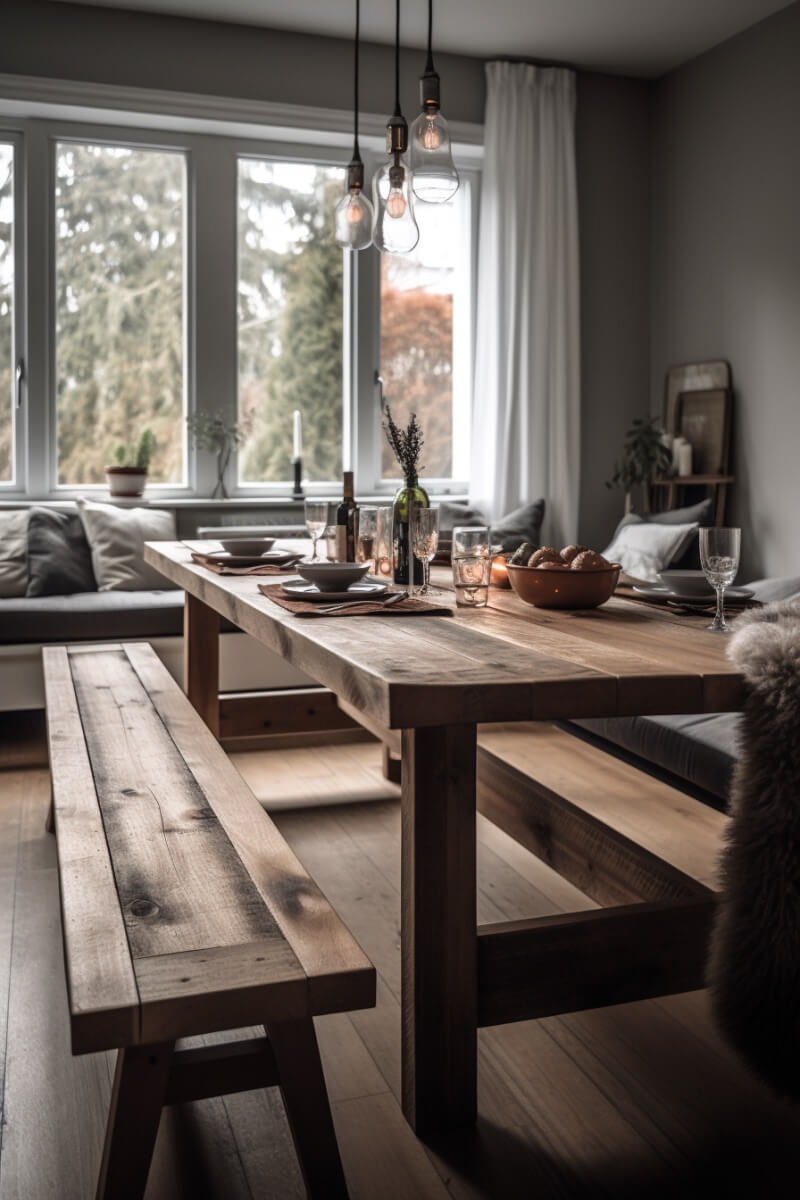
1 | White Oak
White Oak is a dense, robust hardwood, characterized by its light to medium brown hue with red and orange undertones. Its grain pattern is less varied compared to red oak, making it an aesthetically pleasing choice for table tops. Boasting a Janka hardness level of 1,360, it is exceptionally durable and resistant to scratches and dents.
Notably, white oak’s natural resistance to decay and rot makes it ideal for outdoor use. While it may be slightly more expensive than red oak, its weather-resistant properties and overall affordability make it a worthwhile investment for a long-lasting and visually appealing table top.
| Characteristics | White Oak for Wood Table Tops |
|---|---|
| Hardness | 1,360 lbf (Janka scale) |
| Grain Pattern | Straight grain with a coarse texture |
| Texture | Coarse, uniform texture |
| Workability | Good; can be cut, shaped, and joined easily |
| Stability | High dimensional stability; resists warping |
| Color | Light to medium brown; can accept stains/finishes |
| Sustainability | Commonly available; responsible harvesting advised |
| Cost | Moderate to expensive; varies by region |
| Availability | Widely available |
| Maintenance | Moderate; may require periodic refinishing |
White Oak: MINI-SUMMARY & IDEAL Table Top Setting
- Ideal Table Top Application: White oak’s durability and resistance make it perfect for both indoor and outdoor table tops, withstanding daily wear and tear.
- Finishing Options: This versatile wood responds well to staining, painting, and varnishing, allowing for a wide range of customization options.
- Features and Benefits of Wood: White oak offers a unique combination of aesthetics, strength, and affordability, making it a sought-after choice for long-lasting, attractive table tops.
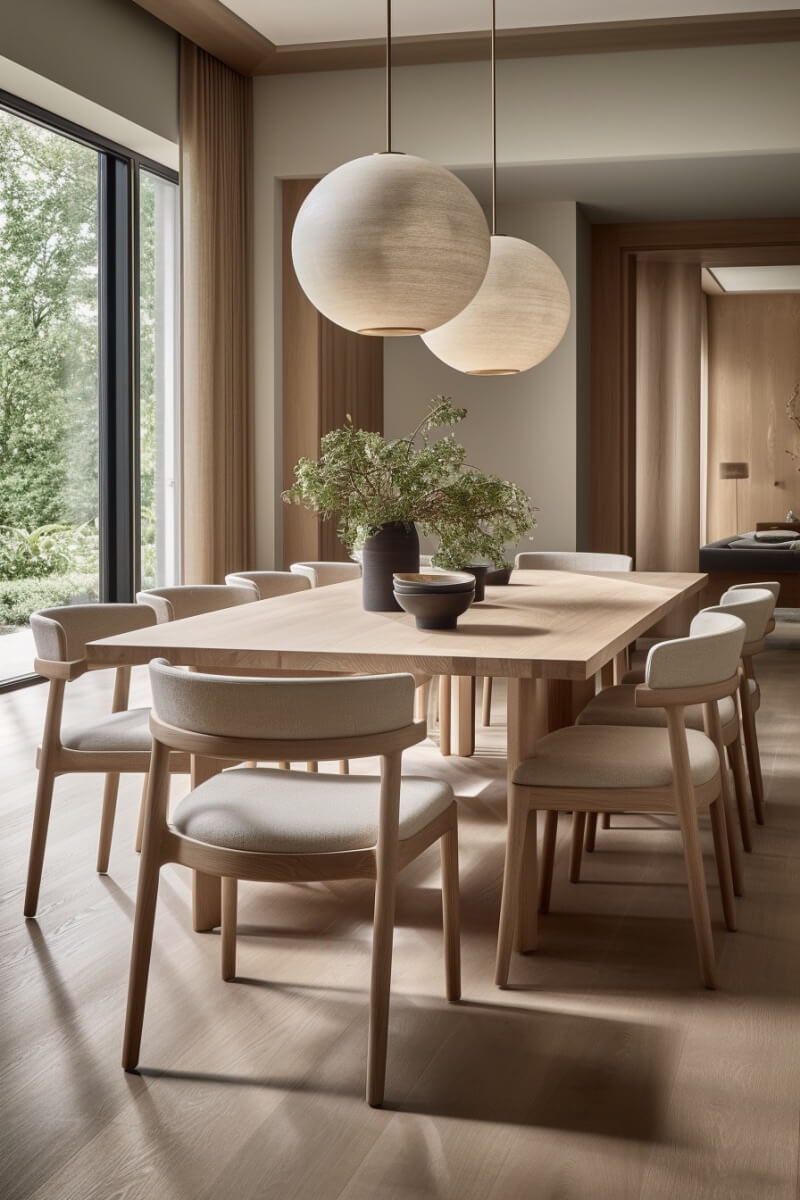
Pros
Cons
2 | Cherry
Cherry wood, with its rich reddish-brown hue and silky-smooth texture, is a popular choice for dining room and kitchen tables. Its fine spiral grain creates a visually stunning, fluid appearance. Over time, exposure to heat and light enhances cherry wood’s color, making it darker, deeper, and richer.
This wood is known for its natural mineral deposits, adding unique texture to table tops. With a hardness rating of 950, cherry is softer than oak but harder than pine, ensuring longevity with proper care. Discover the timeless elegance and lasting quality of cherry wood table tops by exploring our comprehensive guide.
| Characteristics | Cherry for Wood Table Tops |
|---|---|
| Hardness | 950 lbf (Janka scale) |
| Grain Pattern | Fine, straight grain with a smooth texture |
| Texture | Fine, uniform texture |
| Workability | Excellent; easy to cut, shape, and join |
| Stability | Good dimensional stability; minimal warping |
| Color | Rich, reddish-brown; darkens with age |
| Sustainability | Widely available; responsible harvesting advised |
| Cost | Moderate to expensive; varies by region |
| Availability | Commonly available |
| Maintenance | Low; periodic refinishing may be needed |
Cherry: Mini-Summary & Ideal Table Top Setting
- Ideal Table Top Application: Cherry wood’s elegance and durability make it perfect for dining room and kitchen tables, enhancing any interior space.
- Finishing Options: Cherry wood’s natural beauty shines through with polishing, staining, or waxing, highlighting its unique grain and rich color.
- Features and Benefits of Wood: Cherry wood offers a visually appealing grain, rich color that deepens over time, and a long-lasting, sturdy surface for table tops.
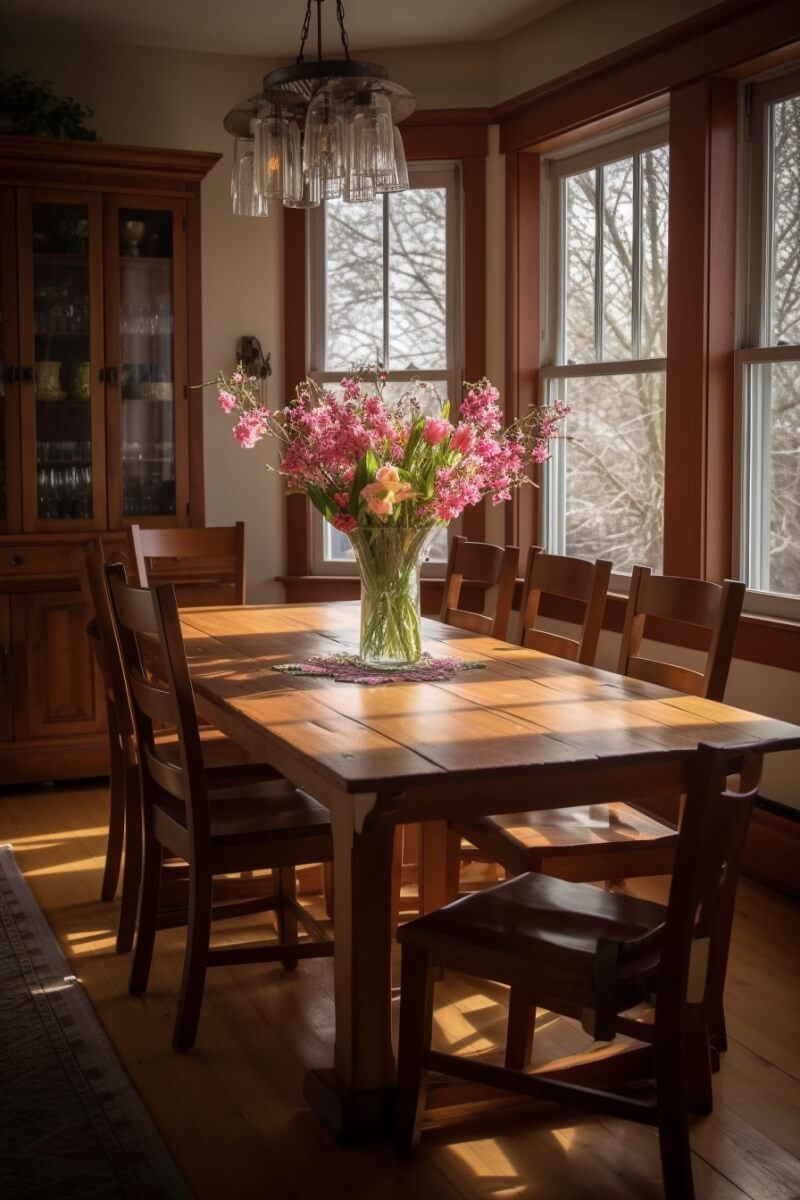
Pros
Cons
3 | Walnut
Walnut is a highly sought-after wood for table tops, prized for its beauty, strength, and durability, ensuring longevity. With a hardness rating of 1,010, it’s resistant to scratches, abrasions, dents, and decay. Woodworkers love walnut’s beautiful grain pattern, which ranges from creamy-white to dark chocolate, often featuring golden, purple, or black tones that enhance its visual appeal.
Ideal for both contemporary and traditional dining furniture, walnut is also commonly used in crafting wooden bowls, spoons, and other kitchen utensils. The wood carves exceptionally well, and when finished with oil, it boasts a stunning sheen. Discover the allure of walnut and how it can transform your dining space.
| Characteristics | Walnut for Wood Table Tops |
|---|---|
| Hardness | 1,010 lbf (Janka scale) |
| Grain Pattern | Straight, wavy, or curly grain patterns |
| Texture | Medium to coarse texture |
| Workability | Excellent; easy to cut, shape, and join |
| Stability | Good dimensional stability; minimal warping |
| Color | Rich, chocolate brown to purplish-black |
| Sustainability | Widely available; responsible harvesting advised |
| Cost | Moderate to expensive; varies by region |
| Availability | Commonly available |
| Maintenance | Low; periodic refinishing may be needed |
Walnut: Mini-Summary & Ideal Table Top Setting
Ideal Table Top Application: Walnut’s versatility makes it perfect for modern or traditional dining tables, enhancing any room’s ambiance with its rich hues.
Finishing Options: Applying oil finish to walnut wood not only accentuates its natural beauty but also imparts an alluring sheen to the table top.
Features and Benefits of Wood: Walnut boasts a unique grain pattern, excellent durability, and scratch resistance, ensuring a long-lasting and visually appealing table top.
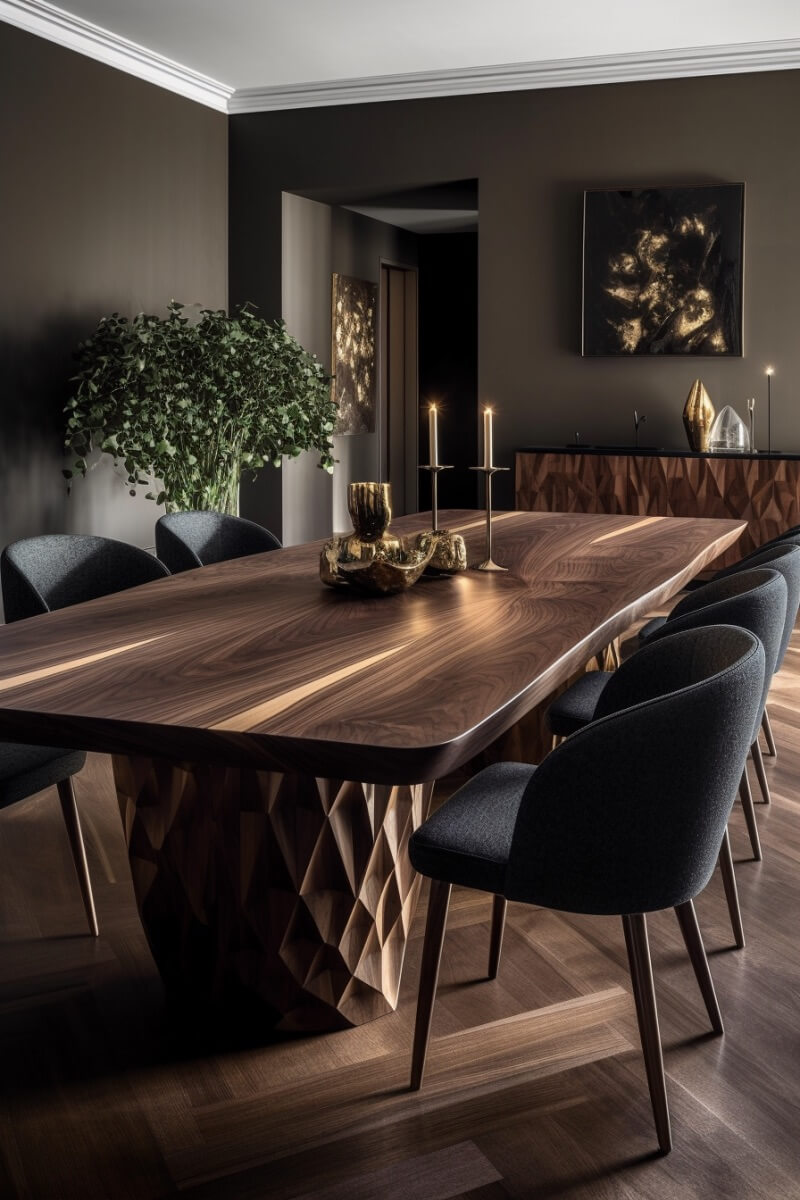
Pros
Cons
4 | Brown Maple
Brown maple, often misnamed “soft maple,” is a strong and elegant choice for dining table tops with a 950 Janka hardness rating. Its attractive hues span from soft white to golden brown, radiating warmth. The wood’s unique, straight, and fine grain patterns blend seamlessly with cream, white, tan, and brown streaks, making brown maple an aesthetically pleasing option for table tops.
Brown maple accepts medium to dark stains exceptionally well and offers a smooth surface perfect for painted finishes. This durable, affordable wood creates stunning, long-lasting dining furniture. To explore brown maple’s unique characteristics in-depth, check out this expert guide on brown maple’s qualities.
| Characteristics | Brown Maple for Wood Table Tops |
|---|---|
| Hardness | 950 lbf (Janka scale) |
| Grain Pattern | Fine, straight grain pattern |
| Texture | Fine, uniform texture |
| Workability | Good; moderately easy to cut, shape, and join |
| Stability | Moderate dimensional stability; minimal warping |
| Color | Light to medium brown tones |
| Sustainability | Widely available; responsible harvesting advised |
| Cost | Moderate; varies by region |
| Availability | Commonly available |
| Maintenance | Low; periodic refinishing may be needed |
Brown Maple: Mini-Summary & Ideal Table Top Setting
- Ideal Table Top Application: Brown maple’s warmth and elegance make it perfect for dining table tops, enhancing the room’s ambiance.
- Finishing Options: Brown maple easily accepts medium to dark stains and is suitable for painted finishes, offering versatility.
- Features and Benefits of Wood: The straight, smooth, and fine grain patterns create a visually appealing surface that exudes both charm and durability.
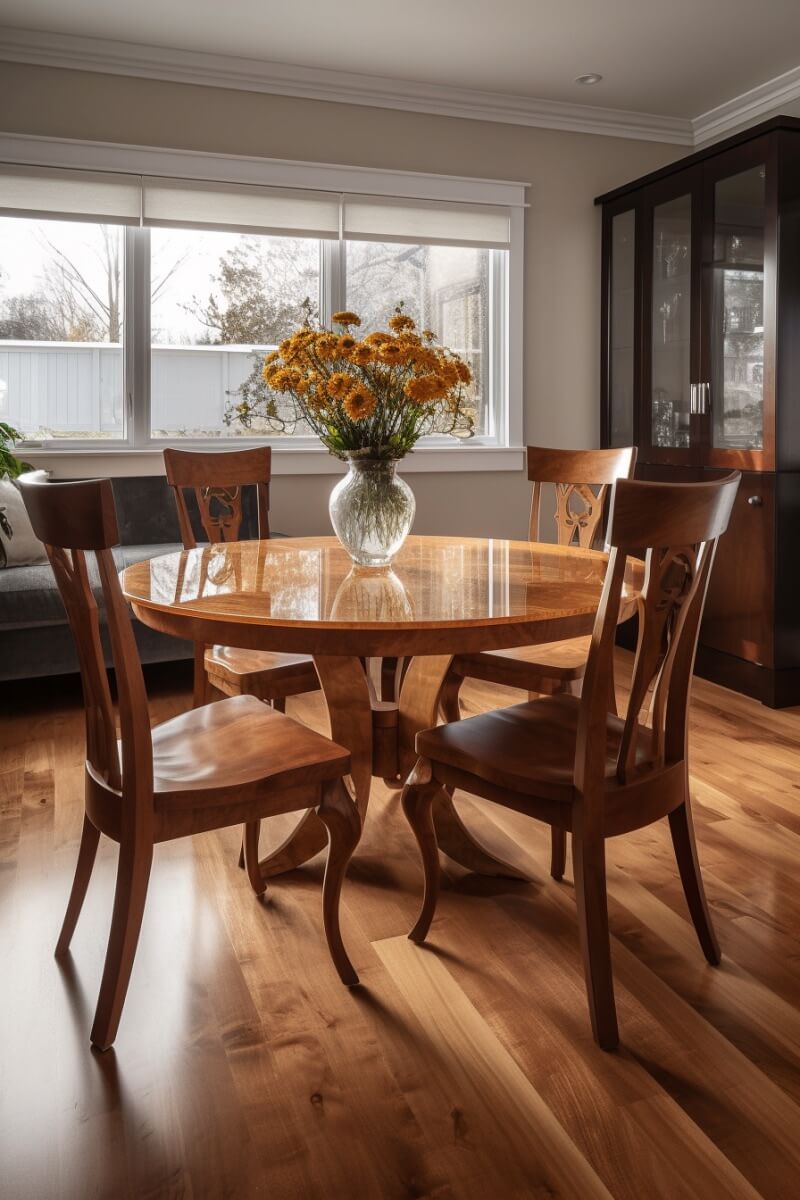
Pros
Cons
5 | Ash
Belonging to the olive family, ash wood is known for its smoothness, toughness, and durability. Its excellent shock resistance ensures it withstands high impact without cracking or splitting. Boasting a 1,320 Janka hardness rating, ash is ideal for dining table tops. Its straight grain and light-brown to beige coloring suit various interiors.
Additionally, ash wood is easy to work with, holding screws and nails effectively while providing strong gluing properties. A comprehensive wood properties study highlights ash wood’s bending strength and stiffness, making it popular in the furniture industry. Choose an ash wood table to elevate your dining experience with durability and elegance.
| Characteristics | Ash for Wood Table Tops |
|---|---|
| Hardness | 1,320 lbf (Janka scale) |
| Grain Pattern | Prominent, straight grain pattern |
| Texture | Coarse, uniform texture |
| Workability | Excellent; easy to cut, shape, and join |
| Stability | Good dimensional stability; minimal warping |
| Color | Light to medium brown tones |
| Sustainability | Widely available; responsible harvesting advised |
| Cost | Moderate; varies by region |
| Availability | Commonly available |
| Maintenance | Low; periodic refinishing may be needed |
Ash: Mini-Summary & Ideal Table Top Setting
- Ideal Table Top Application: Perfect for dining tables, ash wood’s hardness and durability withstand daily wear and tear.
- Finishing Options: Ash wood accepts various finishes, from stains to clear coats, enhancing its natural beauty.
- Features and Benefits of Wood: Ash wood offers excellent shock resistance, workability, and a versatile color palette suitable for diverse interiors.
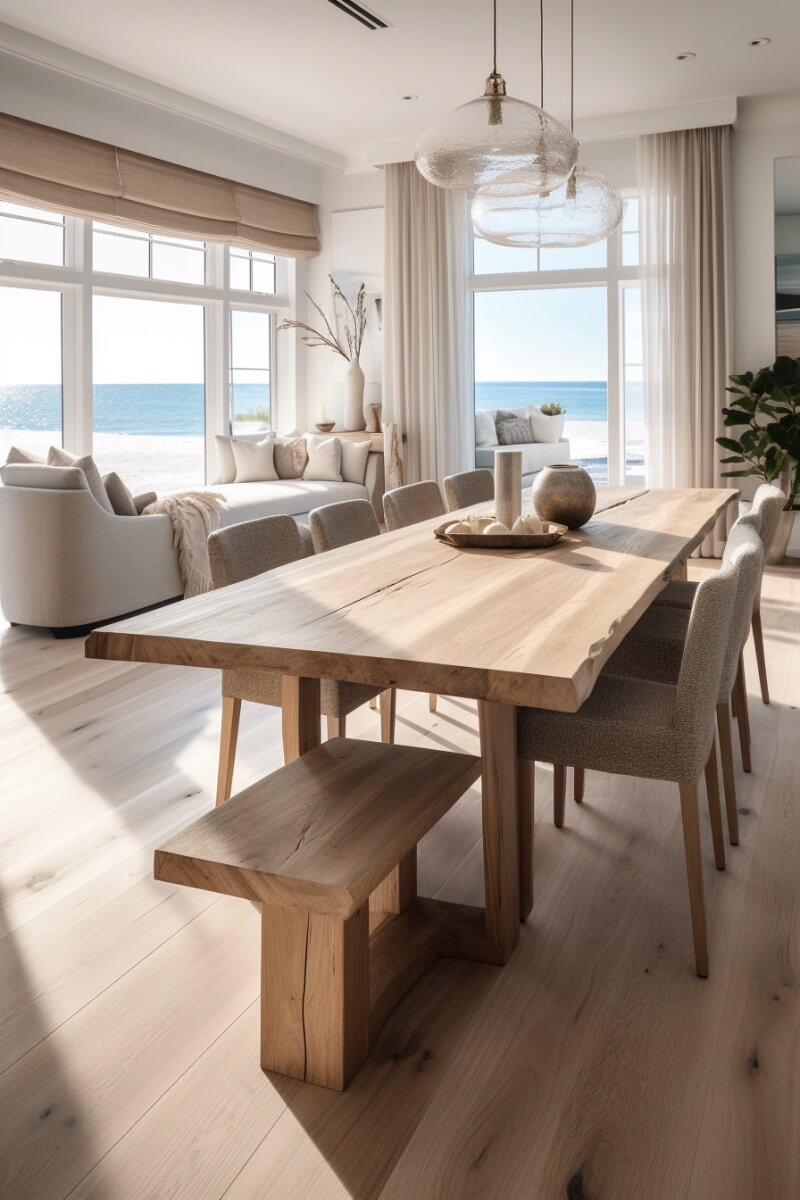
Pros
Cons
6 | Elm
Elm wood uniquely combines softwood and hardwood properties, making it highly desirable for its eye-catching interlocking grain pattern and contrasting dark and light stripes. Its exceptional density and hardness outperform many softwoods, positioning it as an optimal choice for woodworking projects, especially dining table tops.
Besides its aesthetic appeal, elm wood boasts a smooth texture, remarkable split resistance, strength, and bending ability—essential qualities for crafting durable furniture. Its compatibility with screws and nails and ease of wood staining, polishing, and painting further enhance its versatility in woodworking applications.
| Characteristics | Elm for Wood Table Tops |
|---|---|
| Hardness | 830-1,340 lbf (Janka scale) |
| Grain Pattern | Interlocked, straight grain pattern |
| Texture | Coarse, uneven texture |
| Workability | Good; moderate blunting effect on tools |
| Stability | Good dimensional stability; minimal warping |
| Color | Light to medium reddish-brown tones |
| Sustainability | Moderate; responsible harvesting advised |
| Cost | Moderate; varies by region |
| Availability | Somewhat limited; not as common as other hardwoods |
| Maintenance | Low; periodic refinishing may be needed |
Elm: Mini-Summary & Ideal Table Top Setting
- Ideal Table Top Application: Elm wood’s striking grain pattern and durability make it perfect for stylish, long-lasting dining table tops.
- Finishing Options: Elm wood is easily stained, polished, and painted, allowing for versatile and customized finishes to suit any interior.
- Features and Benefits of Wood: Elm wood combines strength, bending capacity, and split resistance, providing exceptional functionality in furniture-making applications.
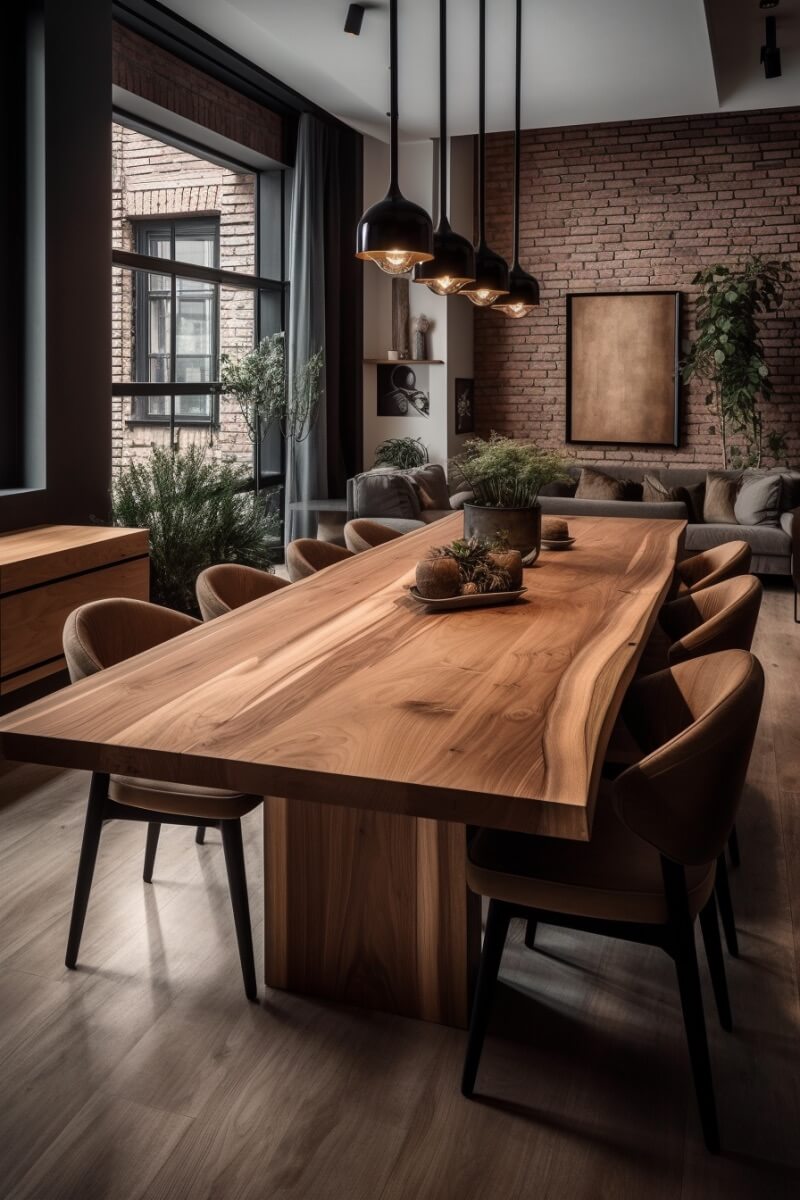
Pros
Cons
7 | Beech
Beech, a highly durable hardwood, is well-regarded for its resistance to shock and abrasion. As one of the hardest wood species, beech’s exceptional strength makes it an ideal choice for crafting table tops. Boasting a straight grain and fine-to-medium texture, beech features a pale cream to light-brown color, imparting a classic appearance to furniture.
Easily accessible and cost-effective, beech is a popular choice among woodworkers for its workability. However, beech’s vulnerability to moisture and rot necessitates careful consideration of its use in environments where exposure to moisture is minimal. With a Janka hardness rating of approximately 1,300, beech offers excellent scratch and dent resistance.
| Characteristics | Beech for Wood Table Tops |
|---|---|
| Hardness | 1,300 lbf (Janka scale) |
| Grain Pattern | Fine, straight, and close grain pattern |
| Texture | Fine, even texture |
| Workability | Good; easy to work with using hand and power tools |
| Stability | Moderate dimensional stability; some movement |
| Color | Pale cream to light reddish-brown tones |
| Sustainability | Good; widely available from managed forests |
| Cost | Moderate; varies by region |
| Availability | Good; widely available |
| Maintenance | Low; periodic refinishing may be needed |
Beech: Mini-Summary & Ideal Table Top Setting
- Ideal Table Top Application: Beech wood’s hardness and straight grain make it ideal for crafting elegant, long-lasting table tops.
- Finishing Options: Beech wood’s fine texture allows for versatile finishing choices, including staining, varnishing, and painting.
- Features and Benefits of Wood: Beech wood provides a pale cream to light-brown hue, offering furniture a timeless, classic appearance, and exceptional durability.
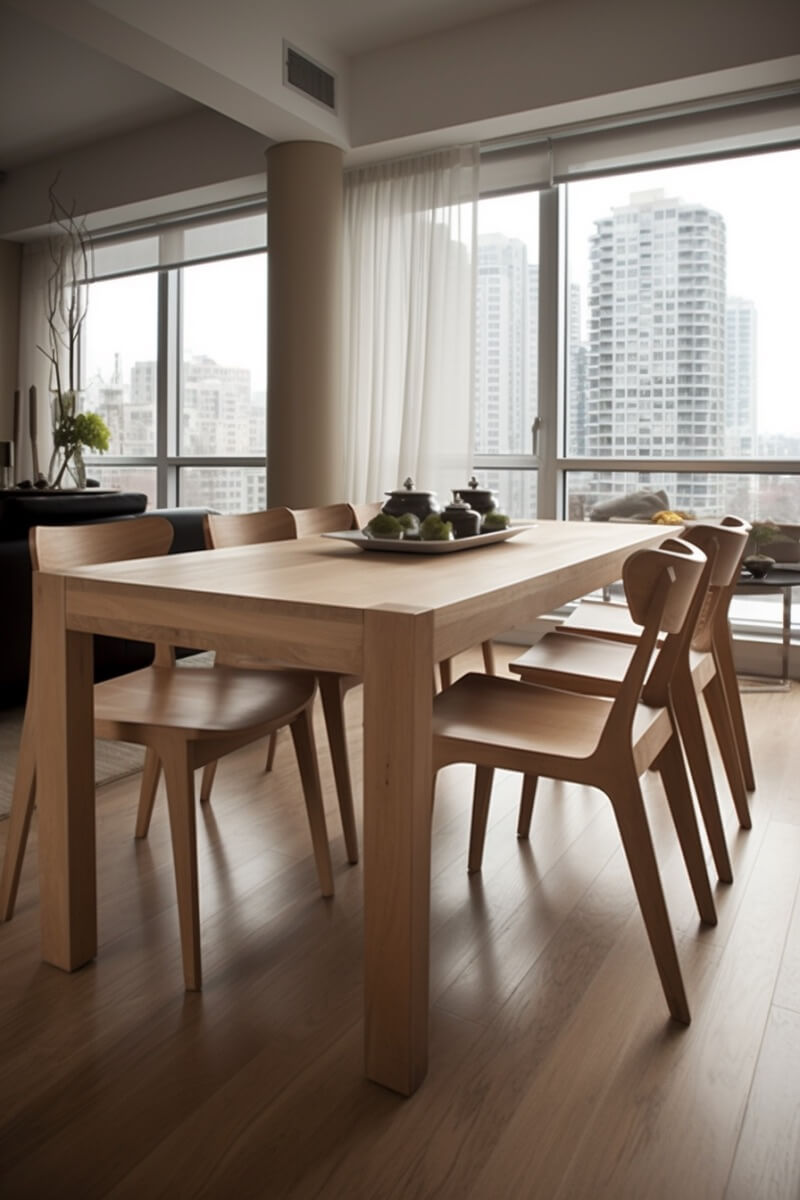
Pros
Cons
8 | Sycamore
Renowned for its toughness and durability, sycamore ranks at 770 on the Janka hardness scale, offering impressive dimensional stability. This hard-wearing wood is well-suited for outdoor applications due to its excellent resistance to weather and harsh environments, ensuring longevity.
Sycamore wood boasts a unique appearance, ranging from light tan to orange and reddish-brown hues. With a fine, uniform texture and an interlocked grain pattern, it does not absorb stains easily. However, its tight grain structure may cause uneven stain distribution, resulting in a splotchy appearance.
| Characteristics | Sycamore for Wood Table Tops |
|---|---|
| Hardness | 770 lbf (Janka scale) |
| Grain Pattern | Interlocked, wavy, or straight grain pattern |
| Texture | Fine, even texture |
| Workability | Good; easy to work with using hand and power tools |
| Stability | Moderate dimensional stability; some movement |
| Color | Light tan to pale brown tones |
| Sustainability | Good; sourced from managed forests |
| Cost | Moderate; varies by region |
| Availability | Good; widely available |
| Maintenance | Low; periodic refinishing may be needed |
Sycamore: Mini-Summary & Ideal Table Top Setting
- Ideal Table Top Application: Sycamore’s durability and stability make it perfect for outdoor table tops, able to withstand harsh conditions.
- Finishing Options: Due to stain absorption difficulties, consider applying clear sealants, oils, or paints for a polished finish.
- Features and Benefits: Sycamore wood offers a unique appearance, excellent dimensional stability, and remarkable weather resistance.
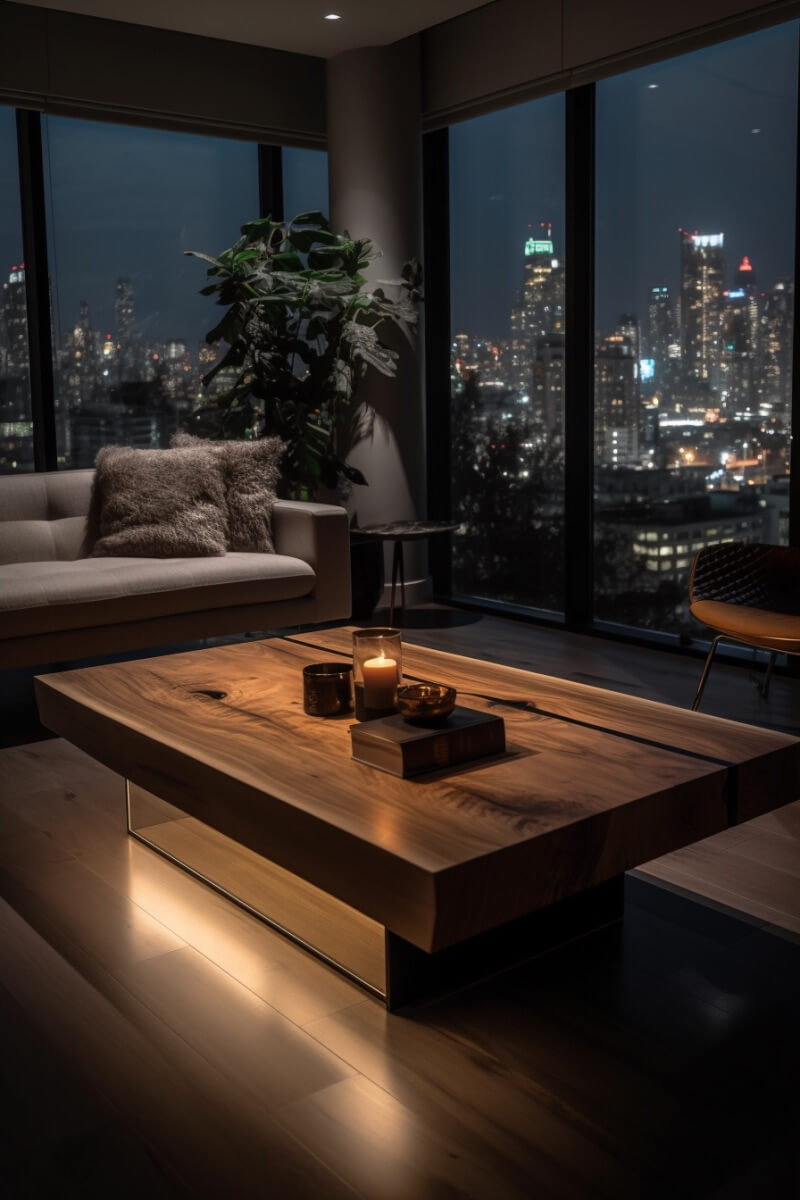
Pros
Cons
9 | Mahogany
Mahogany, a highly sought-after hardwood, is renowned for its rich color, beauty, and durability. Its reddish-brown to deep red hue darkens with age, making it a preferred choice for premium furniture, including dining table tops.
With a Janka hardness rating of 800, mahogany exhibits superior compressive and bending strength compared to many woods. Its robust nature and dense grain structure ensure remarkable durability. Easy to work with, mahogany lends a luxurious appearance and pleasant aroma to furniture while providing resistance to insects and rot.
| Characteristics | Mahogany for Wood Table Tops |
|---|---|
| Hardness | 800 lbf (Janka scale) |
| Grain Pattern | Straight, interlocked, or irregular grain pattern |
| Texture | Medium to fine texture |
| Workability | Excellent; easy to work with hand and power tools |
| Stability | Good dimensional stability; minimal movement |
| Color | Reddish-brown hues, darkening with age |
| Sustainability | Variable; concerns with some species |
| Cost | High; premium wood option |
| Availability | Moderate; availability may vary by species |
| Maintenance | Low; periodic refinishing may be needed |
Mahogany: Mini-Summary & Ideal Table Top Setting
- Ideal Table Top Application: Mahogany’s luxurious appearance and durability make it perfect for high-end dining table tops and upscale furniture.
- Finishing Options: Mahogany accepts stains and finishes well, showcasing its rich color and enhancing its natural beauty.
- Features and Benefits of Wood: Mahogany offers strength, durability, insect resistance, and a pleasing aroma, making it highly desirable for furniture.
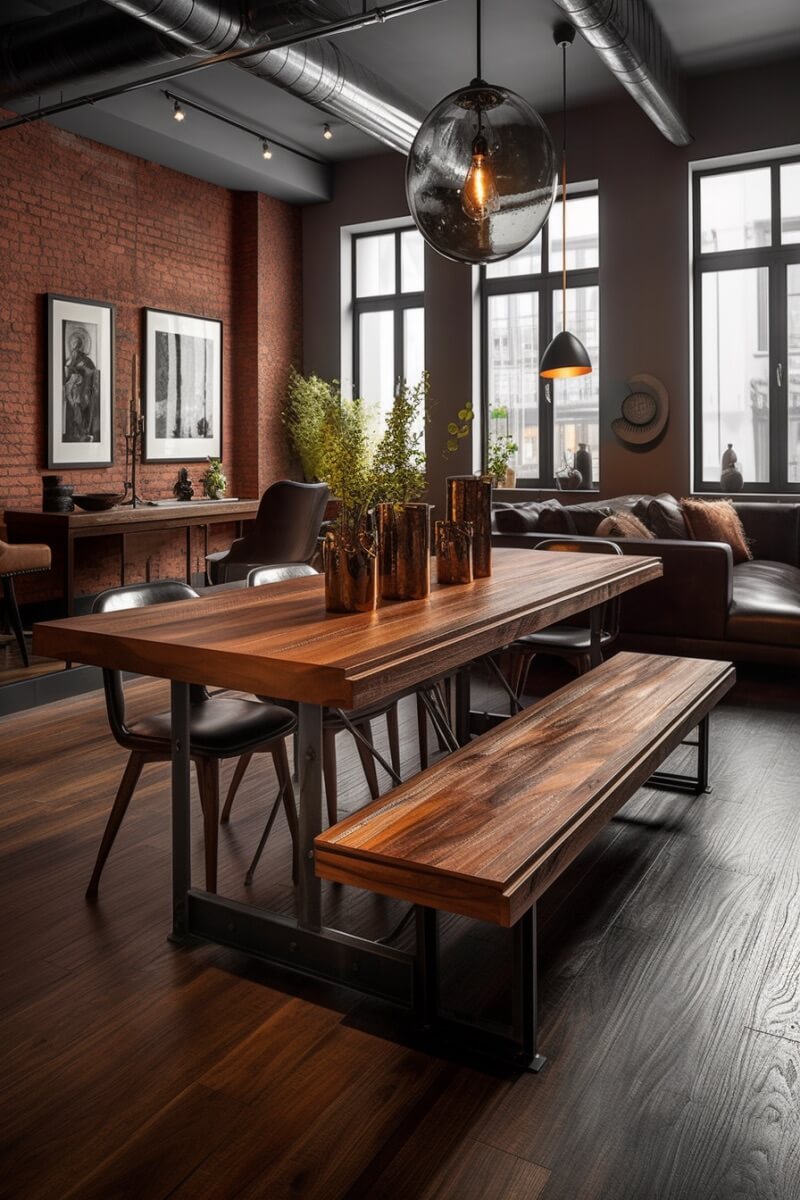
Pros
Cons
10 | Hickory
Hickory, a top choice for dining table tops, is a hardwood renowned for its strong grain pattern and striking appearance. The wood’s color palette varies from reddish-brown to cream with contrasting gold or yellow streaks, contributing to its unique aesthetic.
Boasting a Janka hardness rating of 1,820, hickory is among the hardest woods available. Its open grain pattern ensures a smooth, uniform look, making it easy to finish. Highly resistant to wear and tear, hickory withstands dents, scuffs, and impact. With proper care, a hickory dining table can be a lasting heirloom for generations.
| Characteristics | Hickory for Wood Table Tops |
|---|---|
| Hardness | 1,820 lbf (Janka scale) |
| Grain Pattern | Straight with some waves or irregularities |
| Texture | Coarse, open grain texture |
| Workability | Moderate; can be challenging due to hardness |
| Stability | Good dimensional stability; minimal movement |
| Color | Creamy white to reddish-brown hues |
| Sustainability | Good; domestically sourced and abundant |
| Cost | Moderate; reasonably priced option |
| Availability | Good; widely available |
| Maintenance | Low; occasional refinishing may be needed |
Hickory: Mini-Summary & Ideal Table Top Setting
- Ideal Table Top Application: Hickory’s exceptional durability and unique aesthetics make it ideal for dining table tops and other heavy-duty furniture.
- Finishing Options: Hickory’s open grain pattern allows for easy finishing, accommodating stains, clear coats, and paints to create desired looks.
- Features and Benefits of Wood: Hickory offers a visually striking appearance, unmatched hardness, and high resistance to wear, ensuring long-lasting, heirloom-quality furniture.
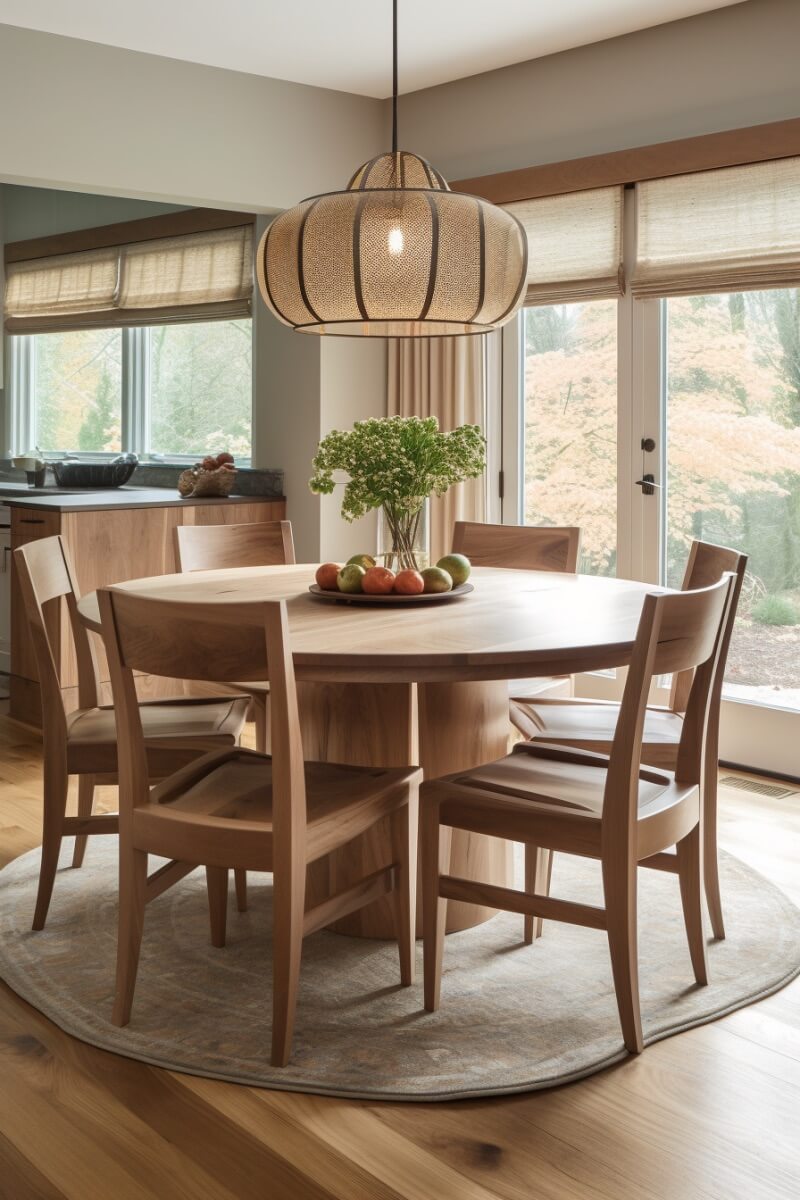
Pros
Cons
Ideal Lumber for Types of Wood Table Tops
Dining Tables
A wooden dining table offers unmatched warmth, timeless elegance, and exceptional durability. Its natural beauty complements various interior styles, providing a welcoming atmosphere.
Wood’s inherent strength ensures a long-lasting investment, while its versatility allows for easy customization and refinishing, making it the ideal material for your home dining experience.
If you want a wood table top for your dining table, then the best options are:
| Wood Type | Color & Aesthetic | Hardness & Durability | Workability & Finishing | Price Range |
|---|---|---|---|---|
| Walnut | Dark, beautiful grain patterns | Dense and hard | Good workability | Expensive |
| Oak | Range of colors from light to dark | Hard-wearing, durable | Moderate workability | Moderate to expensive |
| Maple | Smooth and soft texture | Harder varieties are more durable | Good workability | Moderate pricing |
| Pine | Light, creamy-white to yellow | Slightly softer, durable | Easy workability | Inexpensive |
Tips for Picking Wood for Dining Tables
- Consider Aesthetics and Color: Examine wood color and grain patterns to find a wood type that complements your home décor and personal preferences.
- Evaluate Hardness and Durability: Choose a wood that offers long-lasting durability and resistance to daily wear, ensuring your dining table withstands regular use.
- Assess Workability and Cost: Factor in the ease of working with the wood and its price range, balancing your budget with the desired quality and functionality of your dining table.
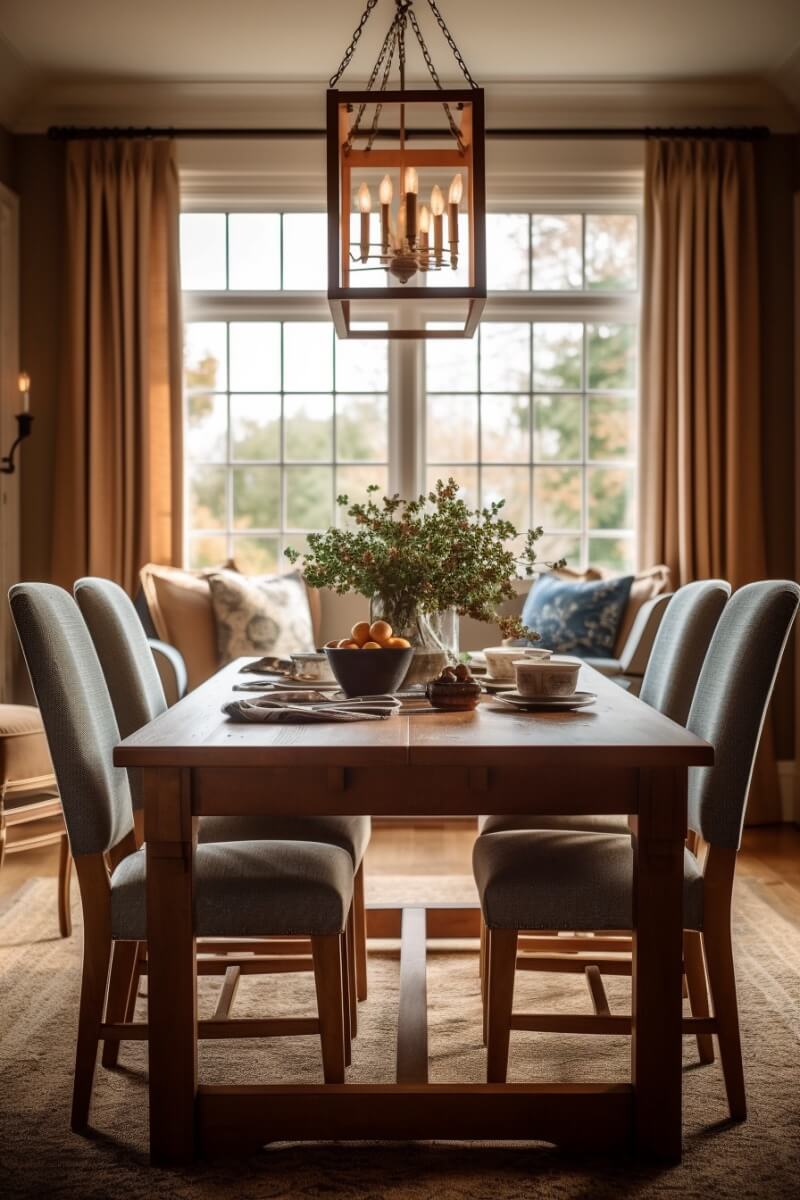
Coffee Tables
Coffee tables constructed out of hard wood bring a touch of sophistication and organic charm to your living space. Their natural warmth creates a cozy ambiance, while the sturdiness of wood ensures durability and longevity.
Wood coffee tables offer diverse design options, effortlessly fitting into a wide range of décor styles and providing a functional, timeless centerpiece for your room.
Some of the best wood options for coffee tables include:
| Wood Type | Color & Aesthetic | Hardness & Durability | Workability & Finishing | Price Range |
|---|---|---|---|---|
| Pine | Creamy-white to yellow tones | Softwood, lightweight | Easy workability | Inexpensive |
| Oak (Red & White) | Bold color, patterned grain | Hard and durable | Moderate workability | Expensive |
| Poplar | Whitish, closed straight grain | Resilient and user-friendly | Smooth finishing | Moderately priced |
| Walnut | Rich chocolate-brown color | Hard and durable | Moderate workability | Expensive |
| Cherry | Warm reddish-brown hues | Hard and durable | Moderate workability | Expensive |
Tips for Picking Wood for Coffee Tables
- Match Style and Functionality: Choose wood that complements the design and purpose of your coffee table, taking into account both aesthetics and practical usage.
- Examine Hardness and Weight: Select wood with appropriate hardness for durability, while considering weight for easy mobility when rearranging your living space.
- Consider Cost and Maintenance: Assess your chosen wood’s price range and required upkeep, ensuring it aligns with your budget and maintenance preferences.
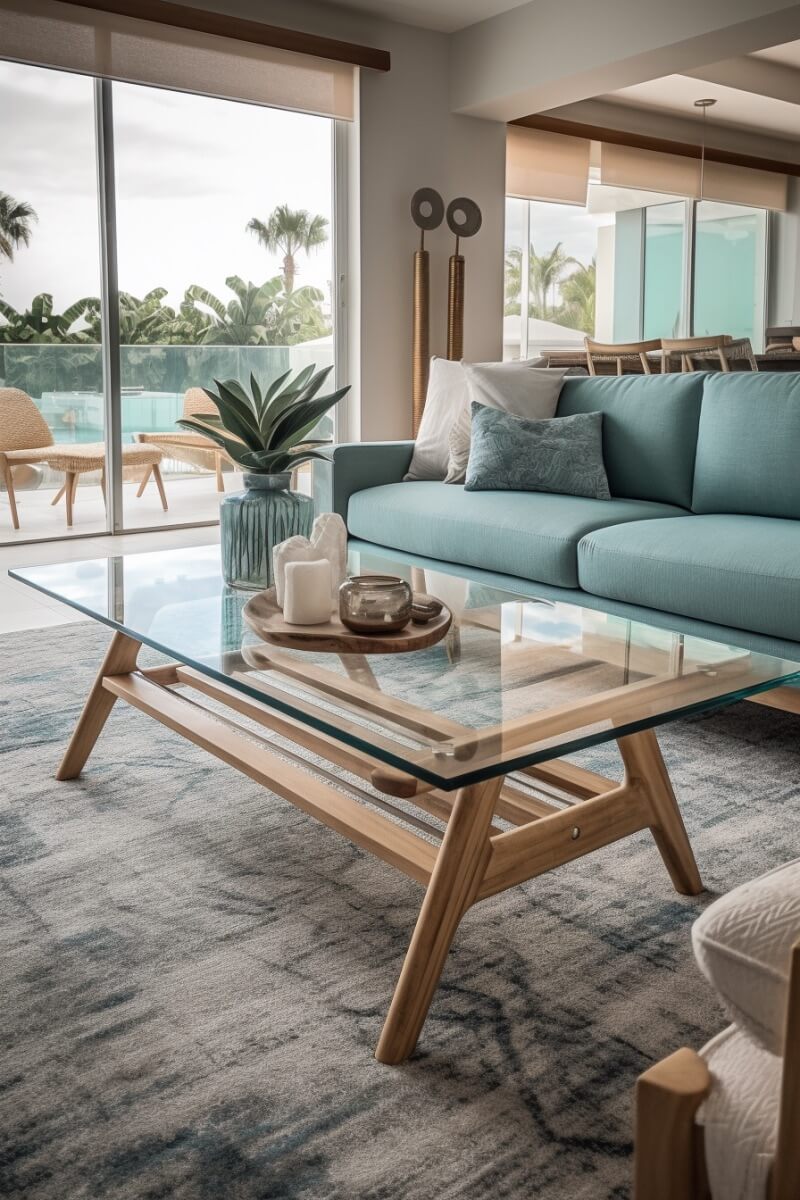
DIY Farmhouse Table
Rustic farmhouse tables exude a rustic elegance, blending perfectly with various interior styles, from traditional to modern farmhouse aesthetics. These tables offer exceptional durability, showcasing the natural beauty and character of wood while providing a functional gathering space.
Investing in a wood farmhouse table creates a timeless centerpiece that will serve your family for generations to come.
So, the best types of wood for DIY farmhouse tables include:
| Wood Type | Color & Aesthetic | Hardness & Durability | Workability & Finishing | Price Range |
|---|---|---|---|---|
| Pine | Light coloring, easy to absorb stains | Softwood, lightweight | Easy workability | Inexpensive |
| White Oak | Rustic look and feel | Durable and sturdy | Moderate workability | Moderate to expensive |
| Cypress | Beautiful knots, rustic appearance | Softer than pine, resistant to warping | Moderate workability | Moderate pricing |
| Maple | Yellowish-white color, bright tones | Dense, scratch and water resistant | Easy workability | Moderate to expensive |
Tips for Picking Wood for Farmhouse Tables
- Emphasize Rustic Aesthetics: Select wood that embodies the classic farmhouse look, with natural grain patterns, knots, and warm color tones.
- Evaluate Durability and Stability: Choose wood that offers long-lasting strength and resistance to warping, ensuring your farmhouse table withstands daily use.
- Consider Workability and Price: Opt for wood that is easy to work with for DIY projects and falls within your budget without compromising quality or appearance.
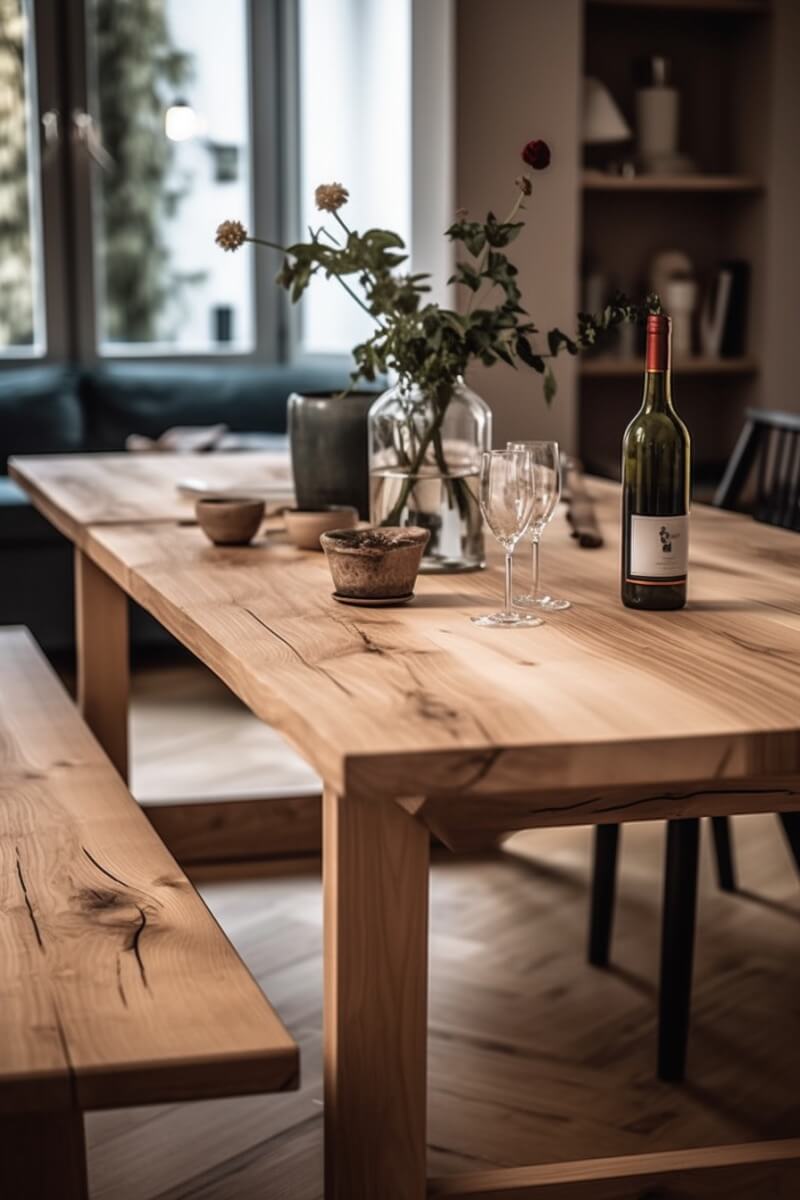
Wood for Table Tops FAQs
How Can You Tell a Good Quality Wood Table?
Discerning the quality of a wood table requires a keen eye and a comprehensive understanding of several key factors. Start by examining the wood species used in the table’s construction.
The wood’s durability is often determined by its Janka hardness rating, which indicates the wood’s resistance to denting and wear. Opt for wood species with higher Janka ratings for increased longevity and resilience, ensuring your table will withstand the test of time.
Wood quality is another vital aspect of table evaluation. Inspect the wood for any imperfections, such as cracks, knots, or voids. A well-crafted table will have minimal flaws, and any existing imperfections should be expertly treated with a suitable filler or resin to promote long-term stability.
In addition, scrutinize the table’s joint construction, as precise and seamless joinery, like dovetail or mortise and tenon joints, reflects skilled craftsmanship and contributes to the table’s overall structural integrity.
Lastly, evaluate the table’s finish, which serves as a protective barrier for the wood. A high-quality finish should exhibit water resistance and scratch resistance, safeguarding the wood’s natural appearance and prolonging its lifespan.
The table’s craftsmanship should be exceptional, demonstrated by meticulous fabrication, construction, and assembly. Look for even edges, smooth surfaces, and a stable structure to indicate a superior wood table.
By carefully considering these elements, you can confidently select a wood table that showcases expert craftsmanship and enduring quality, making it a worthwhile investment for your home.
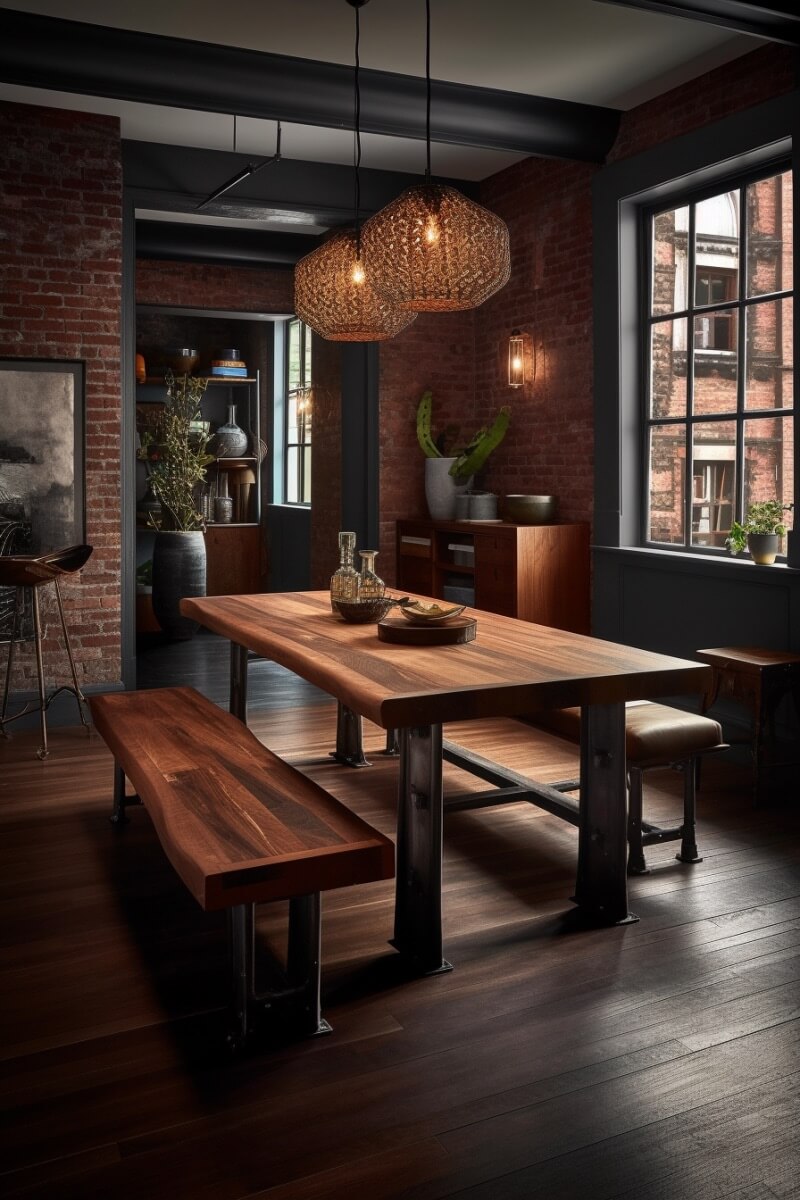
How Thick Should Wood Be for Table Top?
Determining the appropriate thickness for a wood table top depends on various factors, such as the table’s purpose, size, and the wood species utilized. By understanding these aspects, you can make an informed decision that ensures your table top’s structural integrity, aesthetics, and functionality.
For a typical dining table, a thickness of 3/4 inch to 1 1/4 inches is generally recommended. This range provides adequate sturdiness and stability, while preventing the table top from appearing bulky or overwhelming the overall design.
For larger tables or tables crafted from heavier wood species, opting for a thickness closer to 1 1/4 inches or even 1 1/2 inches might be necessary to maintain adequate support and prevent sagging over time.
Conversely, coffee tables and smaller side tables often benefit from a slightly thinner table top. A 1/2 inch to 3/4 inch thickness is typically ideal, as it balances strength and a lighter appearance. However, consider the weight of any items you plan to place on the table, as a thicker top may be necessary for heavier objects.
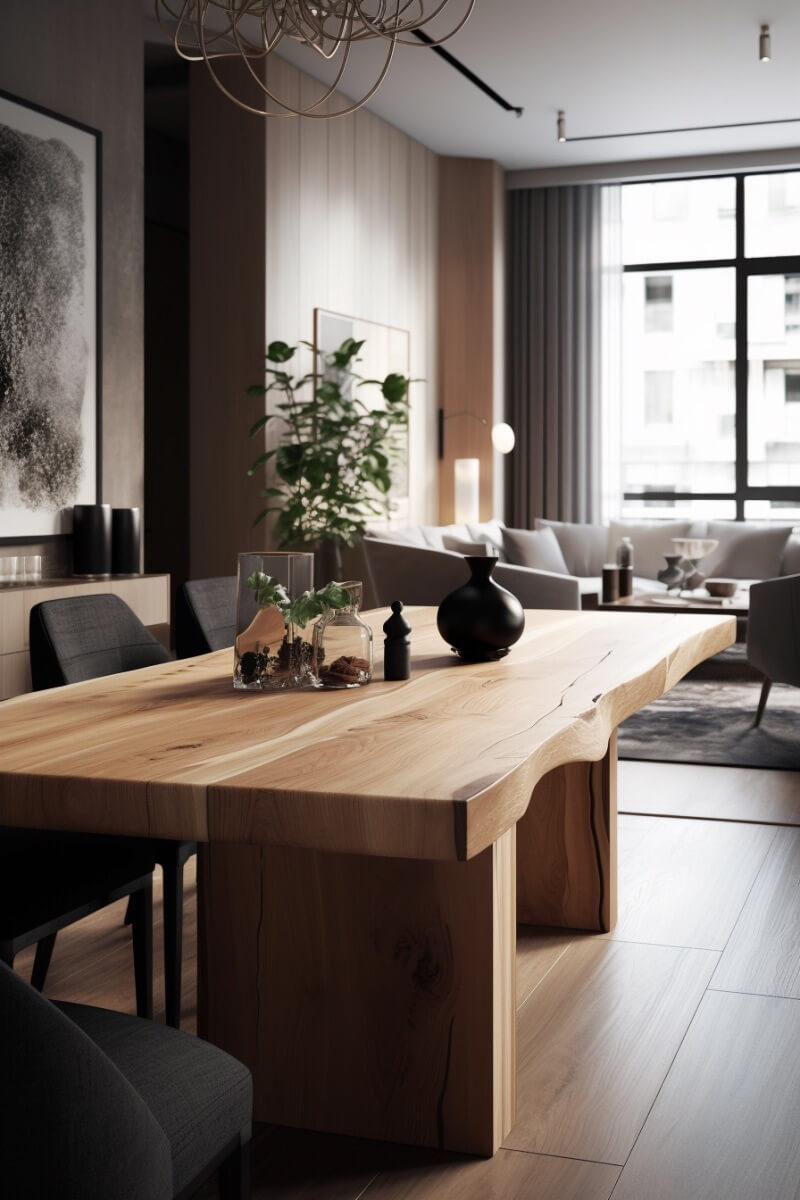
What is the Most Durable Table Top?
Choosing the most durable table top material is crucial for ensuring longevity and withstanding daily wear and tear. Various factors, such as the table’s purpose, aesthetic preferences, and maintenance requirements, influence the decision.
By understanding these aspects, you can select a table top that offers the perfect balance of durability, functionality, and style.
When it comes to wood table tops, hardwoods such as oak, walnut, and maple are known for their exceptional durability. These species have a high Janka hardness rating, which directly correlates to their resistance to dents, scratches, and impact.
Additionally, hardwoods typically feature a dense grain structure that enhances their strength and sturdiness. However, wood table tops require proper maintenance, including regular cleaning and refinishing, to retain their resilience and visual appeal.
Consider materials such as quartz, granite, or laminate for an alternative to wood. Quartz and granite are natural stones that provide outstanding durability, heat resistance, and scratch resistance. These materials require minimal maintenance and are available in a wide range of colors and patterns to suit various design preferences.
Laminate table tops, on the other hand, are cost-effective options that offer excellent resistance to scratches, stains, and moisture. Though not as heat resistant as quartz or granite, high-quality laminate options can still provide lasting durability with proper care.
The Bottom Line
Selecting the best wood for a project requires a thorough understanding of various factors, such as durability, aesthetics, and maintenance. Here is a mini-summary of the key points discussed in this blog post:
- Hardwoods: Woods like oak, walnut, and maple offer exceptional durability and strength for various table types.
- Softwoods: When it comes to pine and cypress, they can be suitable for specific applications, like farmhouse tables.
- Finish and craftsmanship: Both are crucial in ensuring your wood table top’s longevity and visual appeal.
- Thickness: This plays a significant role in determining the stability and durability of the table top.
Ultimately, the choice of wood for your table top should align with your desired style, budget, and maintenance requirements. By taking into account factors such as wood species, finish, and craftsmanship, you can confidently select a table top material that will serve you well for years to come.

